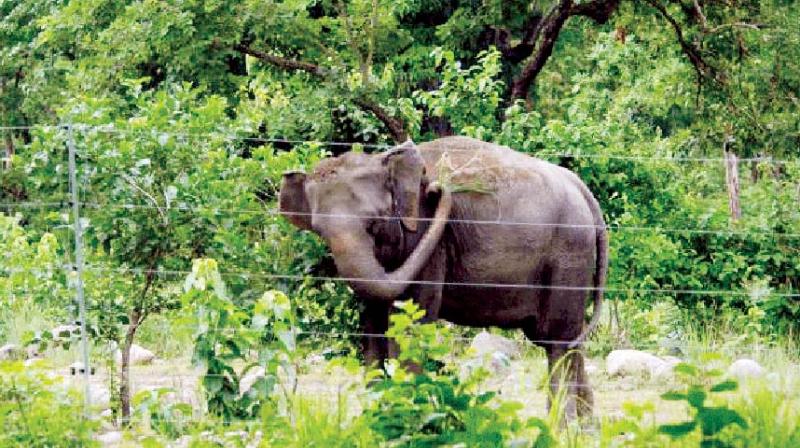Kurnool: Urea is new weapon in poachers arsenal
Nandyal ranks significantly in wildlife crime,

KURNOOL: Urea is the new weapon in the arsenal of poachers to kill wild animals at Nallamala forest in Kurnool district. Easily soluble urea, when added to water, turns colourless and odourless.
Any animal that drinks water that is saturated with urea will experience increase in blood ammonia-level and death due to poisoning immediately. It is suspected that the death of a three-year-old tigress, that was found floating at Yerra Cheruvu, near Mittapalle village, in Rudravaram forest area, could have been possibly due to urea mixed in the water.
Nandyal divisional forest officer Shankar Reddy said that they intercepted a gang of three on Friday night near Chelima. Out of the three, two escaped and one was nabbed.
A preliminary interrogation revealed that they were carrying urea, sharp axes and other unsuspected objects alo-ng with them. He said the hunt was on to nab the other two in the gang to probe the reasons for their entry into the protected zone in Nallamala.
Shankar Reddy said that they suspect people were allegedly using urea to sedate wild animals. He said that they mix the urea in water bodies and when the animals come there to drench their thirst, they become senseless and lose life due to urea mix.
Chelima range, near Mahanandi in Nandyal division, has emerged as the entry route into the Nallamala forest for the poachers. As the tigers in the region are well documented, enterprising villagers form into groups to venture into the forest.
Nandyal division ranks significantly in wild life crime as several cases were filed earlier for crimes related to hunting, illegal squatting on forest lands, timber and bamboo cutting, forest produce, including fruits, honey, herbal medicines in the past. In a case related to selling of tiger trophies such as nails, skin in 2018, 18 accused are facing trial.
DFO Shankar Reddy said that wildlife crime in Nallamala forest poses serious threat to biodiversity. Lack of sufficient staff, villagers’ complicity, not filing cases under Wildlife Act make it flourish.
Nandyal DFO Sankar Reddy said that villagers’ cooperation is essential in controlling crime against wild animals. There are 51 Vana Samrakshana Samithis (VSSs) or joint forest
Protection committees (JFPCs) in the division. An area of 166.84 square kilometres of forests, which is 15.64% of the notified forests, is under the management of the 51 Vana Samrakshana Samithis (VSS).
Too vast a forest cover and disproportionate security make poaching difficult to be curbed, said Dr Khaleel Usman, an environmental activist.
He said that wild life crime flourishes because dead and living animals are traded for a number of purposes, including food, clothing, ornaments, and exhibition in zoos, research, medicines and as trophies.
With significant profit margins to be made, the illegal trade in wildlife is flourishing, and even the so-called legal wildlife trade is rife with corruption, and blatant disregard for both international and national laws, he said.
Nallamala represents seven invasive exotic species, namely Cassia uniflora, Lantana camara, Parthenium hysterophorus, Hyptis suaveolens, Mimosa pudica, Cleome viscosa and Prosopis juliflora, which may pose survival threat to the indigenous flora.
Khaleel said that faunistic survey results in a detailed checklist of mammals, Aves, reptiles, amphibians, fishes and some other species.

